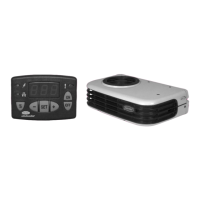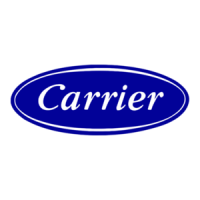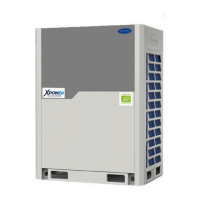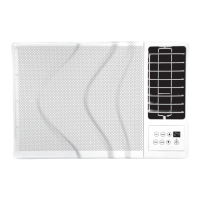12
62--10892
PRODUCT LOADING
BEFORE LOADING:
D Pre-cool the body. This will remove much of the heat from the
inside of the body, and give the product better protection when
it is loaded.
D Place the unit in a defrost cycle immediately before loading. This
will remove moisture accumulated on the evaporator coil.
DURING LOADING:
D T urn the unit off!
D Check product temperature during loading.
D Ensure that the air return and supply opening remain
unobstructed.
D Leave approximately 4 to 5 inches between the load and the
front wall for air return to the unit.
D Leave at least 10 to 12 inches between the top of the load and
the ceiling to ensure that there is nothing to prevent airflow to
the rear of the body
D Load product on pallets to provide free air return to unit and
improve product protection.
Proper air circulation in the truck body, air that can move around
and through the load, is a critical element in maintaining product
quality during transport. If air cannot circulate completely around
the load, hot spots or top-freeze can occur.
The use of pallets is highly recommended. Pallets, when loaded so
air can flow freely through the pallets to return to the evaporator ,
help protect the product from heat passing through the floor of the
truck. When using pallets, it is important to refrain from stacking
extra boxes on the floor at the rear of the truck, this will cut off the
airflow.
Product stacking is another important factor in protecting the
product. Products that generate heat -- fruits and vegetables, for
example -- should be stacked so the air can flow through the product
to remove the heat; this is called “air stacking” the product.
Products that do not create heat -- meats and frozen products --
should be stacked tightly in the center of the trailer.

